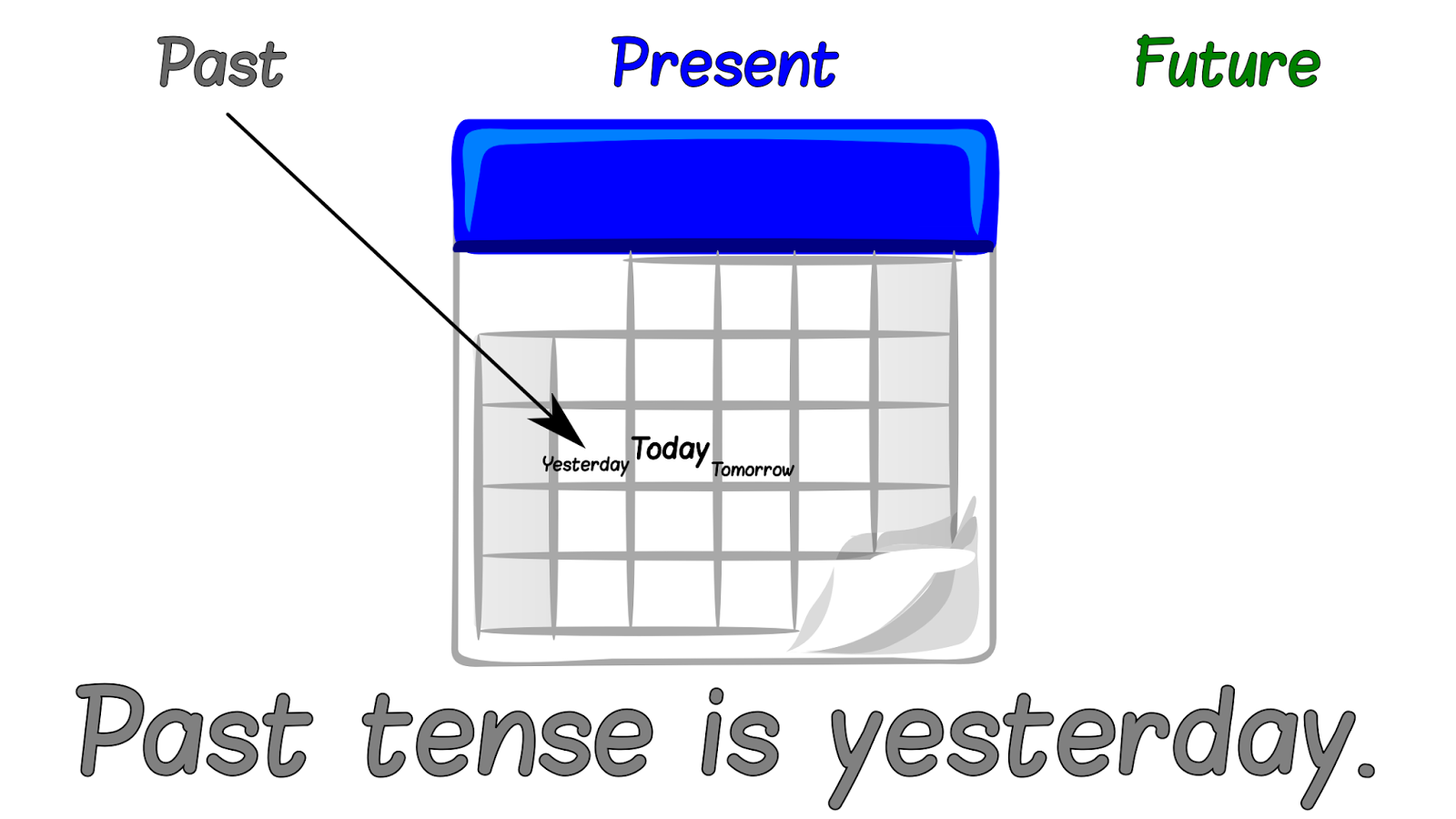The past tense (abbreviated PST) is a grammatical tense whose principal function is to place an action or situation in past time. In languages which have a past tense, it thus provides a grammatical means of indicating that the event being referred to took place in the past. The present tense is the tense (that is, the form of the verb) that may be used to express: action at the present; a state of being; a habitual action. ANSWER KEY Past, Present, and Future Tense Verbs Draw a circle around the action verb in each sentence. On the line, tell whether the verb is past tense, present tense, or future tense. The past continuous tense is formed with the past tense of the verb to be (waswere) present participle (verbs ending in ing). Unlike the simple past tense which shows an action had been completed, the past continuous tense shows an action in progress. The two tenses however can be used together in a sentence to indicate an action happened while another was in progress. As we have seen already, the Present Tense is used when the verb refers to the present time. There are four forms in the Present Tense. Present Perfect Continuous Tense. The students in the Russian Museum. Last month they in the Hermitage. What Is the Simple Present Tense? (with Examples) The simple present tense is quite simple to form (see spelling rules on the right), but it's not simple in terms of how it's used. In fact, it's quite complicated. Examples of the Simple Present Tense The simple present tense is used: (1) To describe facts and habits. Improve your language arts knowledge with free questions in Simple past, present, and future tense: review and thousands of other language arts skills. My first novel was written in the past tense, and once again Im writing a fictional crime memoir primarily in the past tense. However, when the protagonist gets to the action hes suddenly in the present tense. Subject Auxiliary verb Main Verb Object Subject Will be Present Participle (1st form of verb ing) Object Examples: They will be making preparations for their exams. What Is the Past Progressive Tense? (with Examples) The past progressive tense is used to describe an ongoing activity in the past. Often, it is used to set the scene for another action. Examples of the Past Progressive Tense Present simple tense is used to state an action which occurs on regular basis in present. These actions include habitual or repeated actions, scheduled actions occurring on regular basis; and facts that stand true all the time. The following examples express actions occurring on regular basis or facts that stand true all the time. Immediacy is also inflexibility: the narrative proceeds at the speed of the physical action, theres not much scope for expanding and compressing, and timeshifts are awkward or abrupt. Realism in time puts the focus on immediate experience, not wider context and understanding. Chihuahua, Ive seen stories that use past tense for one viewpoint character and present for another. Ive also seen a single character use present tense to relate his current life but revert to past to narrate story events (Here I am sitting in my easy chair, thinking over my life. The PRESENT PROGRESSIVE TENSE indicates continuing action, something going on now. This tense is formed with the helping to be verb, in the present tense, plus the present participle of the verb (with an ing ending): I am buying all my family's Christmas gifts early this year. She is working through the holiday break. Dierdre is being a really good girl in these days before Christmas. Learn how to improve your use of the present simple, present continuous for present and future, past simple and continous, and future simple with these English skills resources, videos and games. The PAST PROGRESSIVE TENSE indicates continuing action, something that was happening, going on, at some point in the past. This tense is formed with the helping to be verb, in the past tense, plus the present participle of the verb (with an ing ending): . I was riding my bike all day yesterday. ; Joel was being a terrible role model for his younger brother. In grammar, a future tense (abbreviated FUT) is a verb form that generally marks the event described by the verb as not having happened yet, but expected to happen in the future. An example of a future tense form is the French aimera, meaning will love, derived from the verb aimer (love). English does not have a future tense formed by verb inflection in this way, although it has a number. Choose Between Past and Present Tense BEFORE You Start Writing Your Novel. New writers are notorious for switching back and forth between past and present tense within their books. Past, present or future tense quiz E3 BBC 2011 7. What tense is the verb in this sentence? ' A) present Present perfect ve simple past tense altrma, exercise bu sayfada yer almaktadr. Altrmalarn yenileri eklenecektir. An inflectional (see inflection) form of verbs; it expresses the time at which the action described by the verb takes place. The major tenses are past, present, and future. The verb in I sing is in the present tense; in I sang, past tense; in I will sing, future tense. Improve your language arts knowledge with free questions in Is the sentence in the past, present, or future tense? and thousands of other language arts skills..











